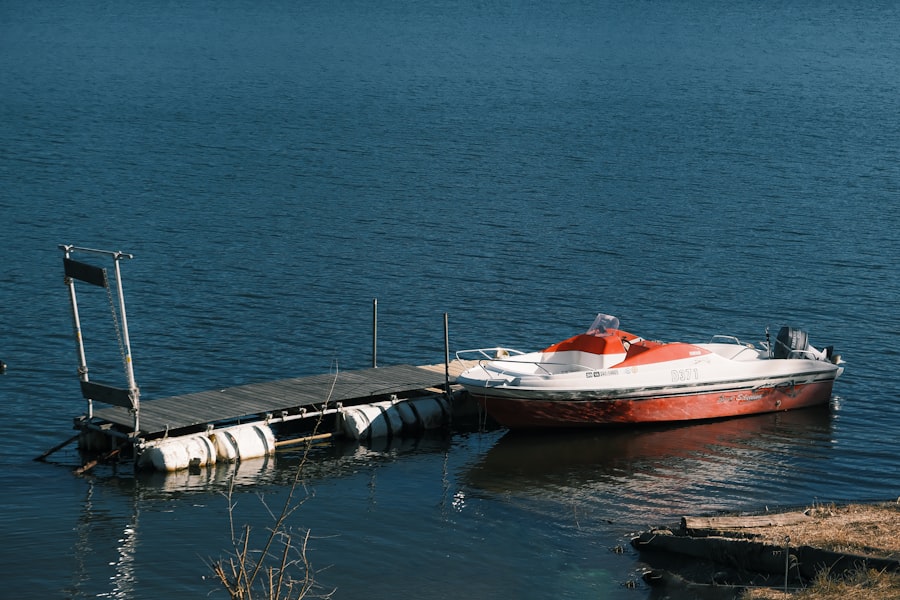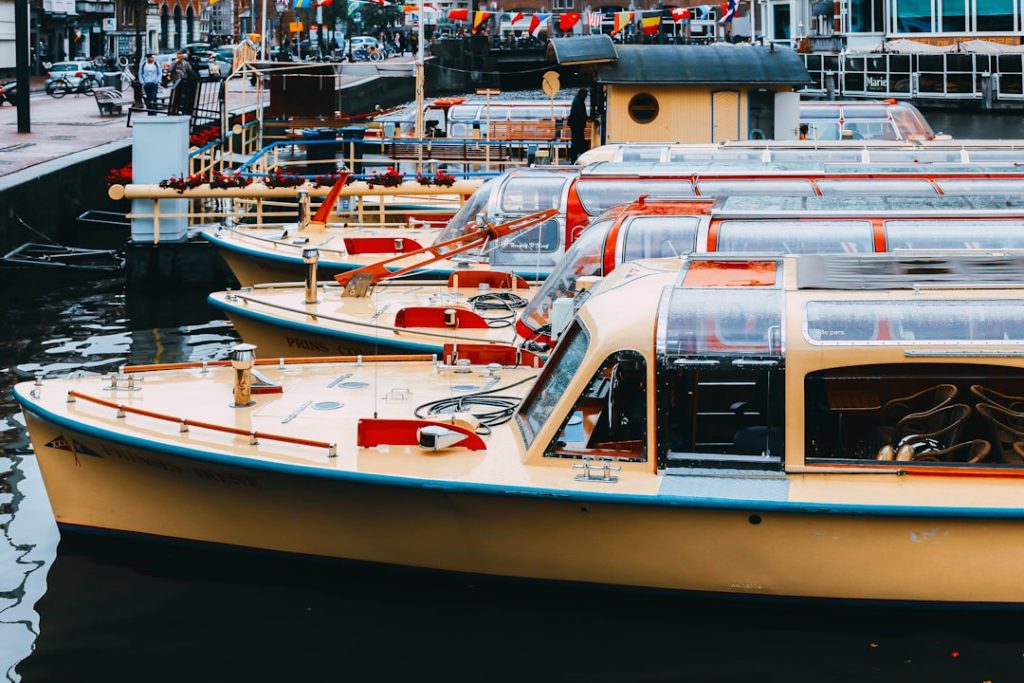When it comes to selecting the right speed boat, the first step is to clearly define your needs and preferences. Speed boats come in various shapes and sizes, each designed for specific activities such as racing, leisure cruising, or water sports. For instance, if you are an adrenaline junkie looking to participate in competitive racing, you might want to consider a high-performance model with a powerful engine and a lightweight hull.
On the other hand, if your primary goal is to enjoy leisurely outings with family and friends, a more spacious and comfortable boat with ample seating and storage might be more suitable. Additionally, consider the type of water conditions you will be navigating. If you plan to operate your speed boat in open waters or rough seas, a vessel with a deep-V hull design can provide better stability and handling.
Conversely, if you will primarily be boating in calm lakes or rivers, a flatter hull may suffice. Furthermore, think about the number of passengers you typically expect to accommodate. Boats vary in capacity, so it’s essential to choose one that meets your social needs while also adhering to safety regulations regarding passenger limits.
Key Takeaways
- Identify your specific needs to choose the right speed boat for your lifestyle and activities.
- Research various sources to find a wide range of speed boats for sale.
- Set a realistic budget considering purchase price, maintenance, and additional costs.
- Thoroughly inspect used boats and test drive multiple options before deciding.
- Negotiate effectively and explore financing options to secure the best deal and maintain your boat properly.
Researching Available Options: Where to Find Speed Boats for Sale
Once you have a clear understanding of your needs, the next step is to explore the market for available speed boats. There are numerous avenues to consider when searching for boats for sale. Online marketplaces such as Boat Trader, Craigslist, and eBay offer extensive listings of new and used speed boats from private sellers and dealerships alike.
These platforms allow you to filter your search based on criteria such as price range, brand, and location, making it easier to find options that align with your preferences. In addition to online resources, visiting local boat shows can provide valuable insights into the latest models and technologies in the speed boat industry. Boat shows often feature a wide array of manufacturers showcasing their products, allowing you to compare different brands and models side by side.
Moreover, engaging with industry professionals at these events can help you gather information about the latest trends and innovations in speed boating. Local marinas and boat dealerships are also excellent places to explore; they often have a selection of both new and pre-owned boats available for immediate purchase.
Setting a Budget: How Much Should You Spend on a Speed Boat

Establishing a budget is a critical step in the process of purchasing a speed boat. The price of speed boats can vary significantly based on factors such as brand, size, age, and condition. New speed boats can range from a few thousand dollars for entry-level models to well over a hundred thousand dollars for high-performance vessels equipped with advanced technology.
Used boats can offer more affordable options but may require additional investment in maintenance or repairs. When setting your budget, it’s essential to consider not only the purchase price but also ongoing costs associated with boat ownership. These costs include insurance, registration fees, fuel expenses, maintenance, and storage fees.
A common rule of thumb is to allocate approximately 10% of the purchase price annually for maintenance and repairs. Additionally, if you plan to finance your purchase, factor in interest rates and loan terms when determining how much you can afford to spend on monthly payments.
Inspecting the Boat: What to Look for When Buying a Used Speed Boat
| Inspection Area | What to Look For | Common Issues | Recommended Action |
|---|---|---|---|
| Hull | Check for cracks, blisters, and repairs | Structural damage, water intrusion | Inspect thoroughly; consider professional survey |
| Engine | Check hours, leaks, unusual noises, and maintenance records | Corrosion, oil leaks, poor performance | Test run engine; request service history |
| Electrical System | Test all electronics, wiring, and battery condition | Faulty wiring, dead batteries | Check connections; replace faulty components |
| Steering and Controls | Ensure smooth operation and no excessive play | Stiff steering, loose controls | Lubricate or repair as needed |
| Propeller and Drive | Inspect for damage, corrosion, and alignment | Dents, bent blades, misalignment | Repair or replace damaged parts |
| Safety Equipment | Verify presence and condition of life jackets, fire extinguisher, and signaling devices | Expired or missing equipment | Update or replace safety gear |
| Interior and Upholstery | Check for tears, mold, and water damage | Wear and tear, mildew | Clean or replace damaged materials |
| Trailer (if included) | Inspect tires, brakes, lights, and frame condition | Rust, worn tires, faulty lights | Service or replace components as needed |
When considering a used speed boat, conducting a thorough inspection is paramount to ensure you are making a sound investment. Start by examining the exterior of the boat for any signs of damage or wear. Look for cracks in the hull, signs of delamination, or any discoloration that may indicate previous repairs.
Pay close attention to the condition of the gel coat; a well-maintained gel coat should be smooth and shiny without any significant scratches or fading. Next, inspect the interior of the boat for signs of water damage or mold. Check upholstery for tears or stains and ensure that all seating is secure and comfortable.
Additionally, examine the engine compartment for any leaks or corrosion. It’s advisable to request maintenance records from the seller to understand how well the boat has been cared for over time. If possible, enlist the help of a marine surveyor who can provide an expert assessment of the boat’s condition and identify any potential issues that may not be immediately visible.
Test Driving: Trying Out Different Speed Boats Before Making a Decision
Before finalizing your purchase, taking potential speed boats for a test drive is crucial. A test drive allows you to experience firsthand how each boat handles on the water and whether it meets your expectations in terms of performance and comfort. Pay attention to how responsive the steering is and how well the boat accelerates.
A good speed boat should provide smooth handling and stability even at high speeds. During the test drive, also assess the comfort level of the seating arrangement and how easy it is to move around the boat. Consider factors such as visibility from the helm and accessibility to controls.
If you plan on using the boat for water sports, test its towing capabilities by pulling a wakeboarder or skier if possible. This hands-on experience will help you make an informed decision about which speed boat best suits your needs.
Negotiating the Price: Tips for Getting the Best Deal on a Speed Boat

Negotiating the price of a speed boat can be an intimidating process, but it’s essential for ensuring you get the best deal possible. Start by doing your homework; research comparable models in similar condition to establish a fair market value. This information will empower you during negotiations and provide leverage when discussing price with the seller.
When entering negotiations, approach the conversation with confidence but remain respectful. Begin by making an offer lower than your maximum budget; this gives you room to negotiate upward while still staying within your financial limits. Be prepared to justify your offer by pointing out any flaws or necessary repairs that may affect the boat’s value.
Additionally, consider offering to pay in cash if possible; this can incentivize sellers to accept a lower price since it eliminates financing complications.
Financing Your Purchase: Exploring Options for Buying a Speed Boat
Financing options for purchasing a speed boat can vary widely depending on your financial situation and creditworthiness. Many buyers opt for traditional bank loans or credit unions that specialize in recreational vehicle financing. These institutions often offer competitive interest rates and flexible repayment terms tailored specifically for boat purchases.
Another option is dealer financing, where dealerships partner with lenders to provide financing directly at the point of sale. While this can be convenient, it’s essential to compare rates with other lenders to ensure you’re getting the best deal possible. Additionally, some manufacturers offer promotional financing programs that may include low or zero-interest rates for qualified buyers during specific promotional periods.
Maintenance and Upkeep: Keeping Your Speed Boat in Top Condition
Owning a speed boat comes with responsibilities that extend beyond just purchasing it; regular maintenance is crucial for ensuring its longevity and performance. Establishing a routine maintenance schedule is essential; this includes tasks such as checking fluid levels, inspecting the engine, cleaning filters, and ensuring that all electrical systems are functioning properly. Seasonal maintenance is also important; before launching your boat each spring, conduct a thorough inspection of all systems and components.
This includes checking for any signs of wear or damage that may have occurred during storage. Additionally, consider investing in protective covers or storage solutions that shield your boat from harsh weather conditions when not in use. By prioritizing maintenance and upkeep, you can enjoy many years of safe and enjoyable boating experiences while preserving your investment’s value over time.


